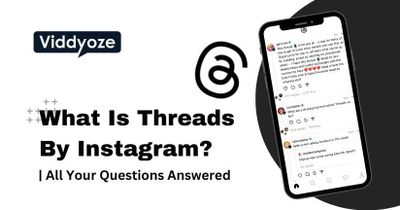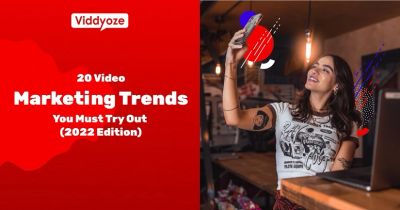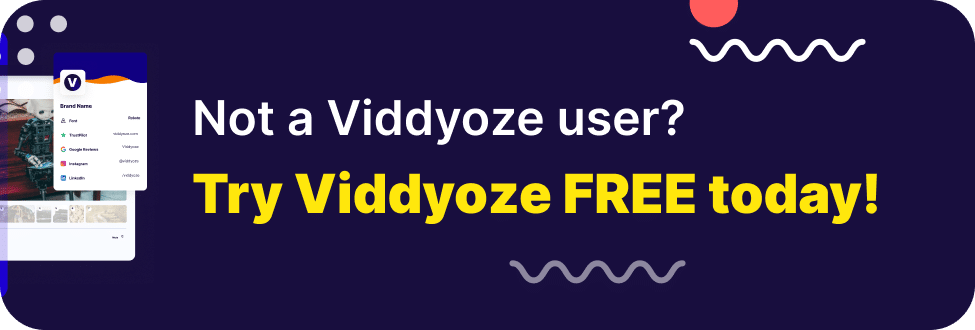No great business should ever follow the crowd. If they did, Apple might never have rebounded and Microsoft may never have come to be, it seems, the default operating system for most personal computers.
Perish the thought.
So whatever you do, don’t start marketing with video just because 86% of other businesses do. No. You should start marketing with video because it works. And that’s not all. In 2021 and beyond, it’s set to work bigger and better than ever before.
Before we dive in, here is a selection of industry specific guides which might be more useful:
Without Video You Won’t Reach The People You Need To
While Covid-19 will come to define 2020, it also marked a tipping point for another (under the radar) reason. Millennials now represented 40% of all global consumers, becoming the most influential demographic when it comes to purchasing power. They are closely followed by Gen Z.
Though it’s lazy to class this whole generation as digital natives – there are actually big variations in their attitudes to the technology – there’s no doubt that for a significant number of them, online video is no longer an ‘extra’ or a ‘nice to have’ when it comes to the businesses they engage with.
In fact, both millennials and Gen Z consume more content via online video than they do through print publications or TV. Many can hardly recall a life before their smartphone, which is especially true for Gen Z and less so for the so-called Xennials. The bottom line is this: if you’re not marketing regularly and effectively with video content, you’re not reaching some of the most powerful consumers out there.
Social Media Platforms Have Handed You a Free Toolkit
Social media platforms have really prioritized video content in the last five years. There are two reasons for this: first, demand from their users, with a reported 45% of US adults watching at least an hour of video via Facebook or YouTube every week, and second, the realization by the platforms themselves that it’s their ability to host short, low-cost video content that sets them apart from other advertising platforms.
As a result, these platforms have refined and improved the tools available to individuals and businesses over the past half decade, allowing them to not only achieve unprecedented reach, but the kind of reach that delivers exceptional results.
The ‘custom intent audiences’ function created by Google, for example, lets you target your video content at users making relevant searches. Then there’s the Periscope tool on Twitter that facilitates low cost, live clips. Or, relatively more recently, there’s shoppable video via Instagram and IGTV. And this is only scratching at the surface of the toolkits now at your fingertips.
Video Content Is Hard To Turn Away From
There’s a good reason that for all its challenges, TV remains a major recipient of marketing budgets. Numerous studies have shown that content combing both aural and visual stimuli – i.e. video – grabs our attention and holds it for far longer than static images or text. Even when our attention is split, video content is easier to recall, as we process visuals about 60,000 times faster than text.
That said, producing and placing a traditional TV ad can cost millions, and sits outside the realm of possibility for most businesses. Creating online video content gives you all of that psychological clout but at a fraction of the cost.
It Has The Potential To ‘Sell’ Better Than Any Other Medium…
Good marketing should always deliver on the bottom line and, on this front, video more than holds its own. For example, the conversion rate for websites with video content is 4.8% (vs. 2.9% without) and two-thirds of US adult consumers say a video has prompted them to make a purchase.
Plus, the tools that allow marketers to track this ROI are becoming much more sophisticated, too, with free integrated analytics available on many platforms.
Video content doesn’t only convert after the fact either. In the last year, shoppable content or ‘live shopping’ – where viewers watch and buy simultaneously – has begun to move over from established markets like China, to the US and Europe allowing businesses to convert views on their video content, to real-time purchases.
…But It Can Also Do Much More Than That
Don’t limit the role of your online video content to the straight sell of classic TV ads. The interactivity and versatility of the online world gives it so much more scope. It can be used to explain a complex offer or demonstrate a tricky product.
A case in point – 45% of businesses that currently use video marketing in the US have an explainer video pinned to their homepage. That’s because it works. It can provide inspiration, spark amusement and intrigue. And it can help create trust in a product or service, through meaningful testimonials, for example.
Convinced Yet?
We hope so. If video content isn’t yet a big part of your marketing strategy then, well, it should be. This isn’t about jumping on the bandwagon. Not at all. It’s about making the most of a medium that gives you greater reach, greater impact, and greater certainty of returns at a fraction of the cost of a traditional mass media TV ad. Don’t follow the crowd, sure. But don’t let yourself or your business get left behind.
Check out these industry specific guides to video marketing your business:



